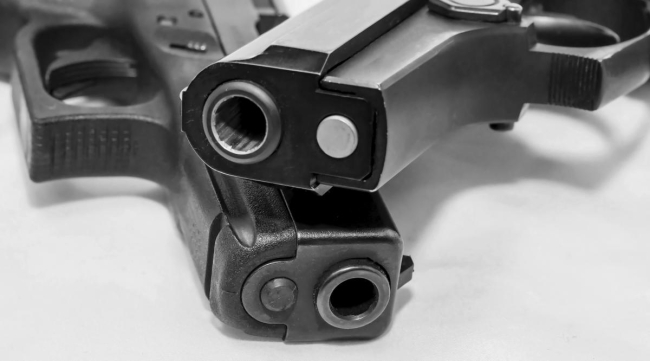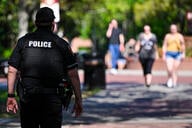You have /5 articles left.
Sign up for a free account or log in.

iStock
When an armed Virginia Tech student shot and killed 32 classmates and professors 12 years ago, the episode led to significant policy shifts at colleges and universities around the country.
Before the shootings, most higher ed institutions lacked a formal body, other than campus police forces, that actively monitored potential threats to their campuses. But after what became one of the bloodiest school shootings in U.S. history, colleges and universities began examining how they should plan for and handle such violence in the future. Over time they formed threat-assessment teams to track possible risks to campuses, whether it be the next mass shooting or an impending natural disaster.
These teams are ubiquitous on college campuses today, although they often work behind the scenes, often kept below the radar of antsy students and nervous parents now all too familiar with college shootings. The work of threat-assessment teams went unmentioned last week after three colleges announced they had identified and shut down three possible threats to their campuses, two of which involved students who owned guns. These incidents, however, highlight the continued and expanding role of threat-assessment teams in keeping a campus safe.
Threat-assessment teams usually include a member of the college's communications team and campus law enforcement, the dean of students, a member of the general counsel’s office, a representative from the university mental health counseling team, the campus student conduct office, as well as a human resources representative, and sometimes the college president.
“From our president to our resident assistant staff, all of us understand our commitment to serve, care and respond,” said Gail C. Tuttle, senior vice president for student life at High Point University in North Carolina, where a student was arrested last week for allegedly planning to gun down his classmates. “It’s human life that we invest in, every day. That can never be passive or taken for granted.”
The 19-year-old High Point student was found with a nine-millimeter semiautomatic pistol, a double-barrel 12-gauge shotgun and ammunition in his dormitory. Police later said the student intended to commit mass murder by Christmastime. He was charged with communicating a threat of mass violence on educational property and two felony charges on carrying a weapon on campus. Carrying a weapon on campus is legal in some states but not in North Carolina.
A rifle was also found on the College of Southern Nevada campus last week, along with 2,000 rounds of ammunition, in a parked car that belonged to a student, college officials said in a note to the campus. The student who owned the weapon said he forgot it was in his vehicle. He was arrested and charged with possessing a dangerous weapon on school property. A representative from the college could not be reached for comment.
The third incident involved a student who allegedly threatened to blow up the campus at rural Campbell University, also in North Carolina.
In at least two of the three instances, students alerted officials to the threats. The threat-assessment teams often rely on reports from students and employees through several channels either in person or online, said Eric Plummer, chairman of the International Association of Campus Law Enforcement Administrators’ Domestic Preparedness Committee. Plummer is also associate vice president for public safety and chief of police at the University of North Dakota.
Members of these teams also receive information from local or state law enforcement, or federal entities, that are sometimes more likely to hear about possible risks to campus. The Federal Bureau of Investigation has campus liaisons who work with local colleges in their area and share information with university law enforcement, said Marisa Randazzo, chief executive officer of Sigma Threat Management Associates and director of threat assessment for Georgetown University. She was also previously chief research psychologist for the U.S. Secret Service.
Threat-assessment groups often meet weekly or more often to discuss possible risks that have been identified and how to respond to them, Plummer said. Members of the team will decide whether certain individuals who've been flagged pose risks that warrant referral for mental health counseling on or off campus, or removal from campus.
Even if students are arrested for threatening or committing a violent act, a threat-assessment team will still track where the students are being held and whether they’ve been released from prison, and they will help university administrators determine whether the students should be allowed back to the university, Randazzo said.
“It may be counterintuitive, but sometimes it is the least risky solution to keep a student in a place where you have leverage over their behavior and you can monitor their behavior, or maybe requiring them to go in for some sort of treatment,” she said.
Threat-assessment teams arose after the Virginia Tech shooting because multiple state and federal reviews of the shooting called for the university to develop such a group as the best tool to continually monitor possible risks to a campus. Prior to the shooting, most institutions only operated what are typically known as care teams, which help students struggling with short-term mental health issues. The Virginia Tech shooter had been referred to the university’s care team after an English professor reported violent imagery in his writings. The care team didn’t have as many representatives from different departments as do threat-assessment teams. As a result, members of the English department were largely the only ones who handled some of the shooter's reported problems.
Virginia, Illinois and Connecticut have since passed laws requiring colleges to form threat-assessment teams. And in 2010, three years after the Virginia Tech shootings, the American National Standards Institute, which develops standards for consumer products and more in the United States, created the benchmarks colleges should follow when dealing with hazards, such as a chemical spill, a natural disaster or acts of violence, Randazzo said. ANSI recommended colleges develop a threat-assessment team.
ANSI’s standards don’t carry the force of law, but they’re often used in litigation, so in the case of a shooting on campus, lawyers would likely look to see whether an institution followed the ANSI criteria, Randazzo said.
“There’s impetus for colleges to adopt threat-assessment programs,” she said.
Usually one member of the assessment team -- the marketing representative or an official from campus law enforcement -- monitors social media, specifically posts that tag or mention the university by name. If someone writes something on Facebook or Twitter that could be viewed as threatening to the campus, often another student will flag that post or report it, Plummer said. Officials use programs such as Social Sentinel, which will scan social media postings that name the university -- or they can alert administrators to posts in a certain geographic radius, Randazzo said. These programs can also search for online mentions of a certain name, so if a controversial speaker were coming to campus and the university expected danger, then administrators could try to flag potential threats.
A National Police Foundation study of 51 violent acts that were averted either in K-12 schools or at colleges showed that in 10 of the incidents, the perpetrators had shared their plans on social media. In 17 of the incidents, the perpetrator told someone else, who then reported the incident.
At High Point, officials have set up several online platforms for reporting concerning behavior, Tuttle said. Students or others can submit tips for officials to follow up on via the university’s campus security webpage. High Point also sponsors a care team, and anyone can file a report online to the team about an individual, Tuttle said. The care team meets weekly and will flag any particularly problematic reports for the university’s threat-assessment group.
After the High Point student was arrested, the university held meetings with the care team and departments to follow up on “what went well and what will help our community heal, prosper and return to normalcy,” Tuttle said.
“Our students understand our care system,” Tuttle said. “When I started this program 12 years ago, it was a new concept for everyone here. But as the years have gone by, the numbers reflect accurately. Our community cares about each other, above and beyond. They know and understand the importance of collaboration and the need for dialogue.”
Campbell University, where the student was arrested for allegedly threatening to blow up the university, has held fake mass-casualty incidents for the last five years to train students, faculty and other campus employees how to respond to a crisis, said Britt J. Davis, the institution’s vice president for institutional advancement. One of those events was held last June and involved a faux scenario where a shooter injured 61 people on campus. Students worked alongside real first responders to get the simulated “patients” to the hospital.
Davis said the university tries to share as much information as possible when an event occurs and relies on students to report to one of the six designated deputies from the Harnett County Sheriff's Office. At least two of these deputies work on the campus every day. The university also has 55 security officers and dispatchers who work on the campus each week.
Campbell is a private Christian college located in small Buies Creek, and reported threats of violence are few and far between, Davis said. In addition to police, students can report to a chaplain, who is typically a student in the Divinity School who lives in campus dormitories and is trained in “emergency protocols,” Davis said.
“I think we have a very effective model,” Davis said. “We have a very safe campus in general.”




